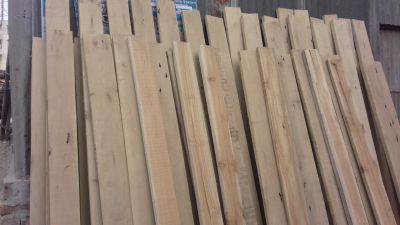Seasoning of timber is the process of reducing the moisture content of freshly cut lumber to a level where it can be used without fear of distortion or cracking. The most common method of seasoning is air drying, but kiln drying is also used for more critical applications.
Definition: Reduction of moisture content along with improving some qualities before the use of woods is called seasoning of timber. By seasoning, generally, the moisture is reduced to about 15% whereas new-cut woods bear about 50%.
A number of factors need to be considered when seasoning lumber, including the type of wood, the thickness of the lumber, and the desired moisture content. Seasoning lumber is an essential step in the woodworking process, and it is important to understand how to do it properly in order to get the best results.

Reasons for Seasoning
Seasoning of timber is done to fulfill some specific requirements. The followings are the reasons to perform timber seasoning.
- To change and improve the properties of wood.
- To make a correct percentage of shrinking of woods.
- To make confident use of wood.
- To reduce the adverse behavior of woods.
- To get the proper working condition of woods.
Methods of Seasoning of Timber
There are mainly two methods of seasoning of timber. These are:
- Natural Seasoning
- Artificial Seasoning
The following tree diagram can be used to illustrate all the methods of timber seasoning.
Detail explanation along with the advantages and disadvantages of these methods of seasoning is discussed below.
Natural Seasoning
Seasoning of wood or timbers using natural elements is called natural seasoning. eg. water and air seasoning.
a. Water seasoning
Removal of wood sap immersing logs into water flow is called water seasoning. It is carried out on the banks of the river while thicker ends are kept towards upstream. After that, the logs are allowed to dry. Disadvantage: It is time-consuming such as 2 to 4 weeks generally.
b. Air seasoning
Exposing the woods to air for seasoning. At first, a platform is required that is built on the ground at 300mm height above the ground.
Secondly, the arrangement of wood in layers. Air circulation is maintained between logs because it helps to reduce moisture which is important for seasoning. The environment for this need to maintain some conditions. A clean, shady, dry, cool place is preferred. Sometimes logs are coated by an impermeable substance to reduce extreme moisture. To improve the quality of oil coating, thick paint coating is maintained. To prevent fungal infection logs are treated with petrol or gasoline.
Advantage:
- Good quality seasoned wood.
- A large amount is convenient in this process.
- Well-seasoned timber is formed.
Disadvantage:
- It’s a slow process.
Artificial Seasoning
a. Seasoning by Boiling
Seasoning by boiling wood logs in hot water is called seasoning by boiling. Drying is done after proper boiling. For a large amount of wood, it is done in an enclosed place where hot steam is passed.
Advantages
- It takes a short amount of time. Generally, 3-4 hours is good enough.
- Develops strength and elasticity.
Disadvantages
- It is serviceable for a small quantity of wood, but not convenient for a large amount.
- The cost is high.
b. Chemical seasoning
The reduction of moisture using a salt solution is called chemical seasoning. After the absorption of water by the solution logs are let to dry.
Advantage
- It increases the strength of the timber.
- It is less time-consuming.
Disadvantage
- Chemical reagents can sometimes reduce strength.
- It can cause a problem in gluing or finishing or corrosion while using.
c. Kiln seasoning
Seasoning of wood by using a large chamber or oven where there is an exemplary process for the circulation of hot air.
Advantage
- Most effective and economical seasoning.
Kiln seasoning can be done by 2 processes such as:-
- Progressive kiln Seasoning: Wood log is entered through the kiln and the temperature and humidity differentials are maintained through the length of the kiln to maintain proper drying.
- Compartmental Seasoning: It's maintained by enclosed containers or buildings. Advantage: It accelerates the process because external energy is used.
d. Electrical seasoning
Dry wood is a non-conductor of electricity while green timber is a conductor, so, can pass alternating current. Thus in this method alternating current is used for drying the wood cells by creating heat. As electricity is used, it’s called electrical seasoning.
Advantage:
- Using this method quick drying is obtained. a French electrical seasoning method is used to season overnight.
Disadvantages:
- The equipment required is very costly.
- It is an uneconomic process as a high rate of electricity is consumed.
- During heating the cells of wood or timber lose their strength and become weak.
Qualities Improved by Seasoning
By seasoning, some common known qualities are improved which are mentioned below:
- Strength
- Hardness
- Durability
- Weight
- Painting and finishing
- Gluing
- Resistance to insect attack
- Electrical resistance
- Heat content
Precautions
Following precautions must be taken during the seasoning of timber.
- During seasoning, the moisture should be removed under environment-maintaining conditions.
- Moisture should be extracted almost at an equal rate from all logs because differentiated dryness causes irregular shape.
- Seasoned timber should be protected from exposure to rain and excessively high humidity during air seasoning
- During seasoning, a proper gap between logs should be maintained for easy and uniform air or water or hot air passing.

